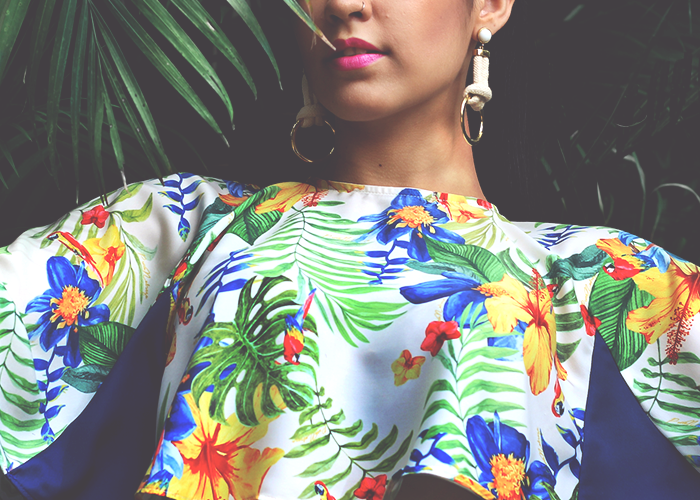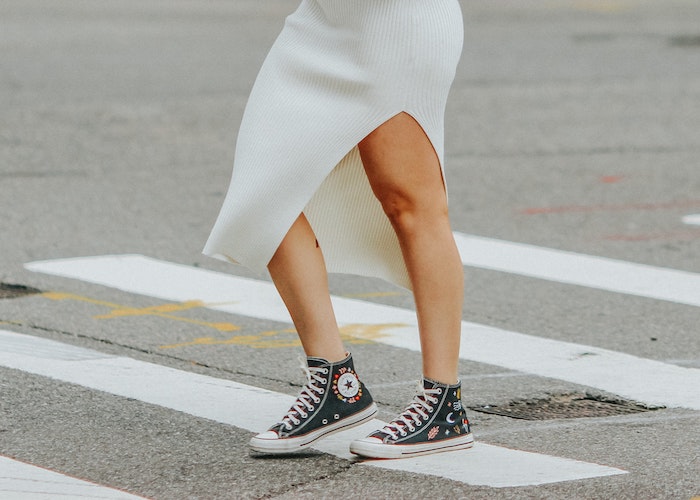4 Steps To Help You Figure Out What Your Clothes Budget Should Be

I have such a complicated relationship with clothes. On one hand, I absolutely adore them. Nothing makes my day quite like someone complimenting my outfit, or asking where I got something. On the other hand, however, I used spend way too much money on clothing. Like, too much. I never really knew how much should I spend on clothing, because it was a free-for-all.
Since my shopping addiction therapy, I’ve had to learn how to get my spending under control and identify my spending triggers. This is important, because impulse shopping can be extremely dangerous for your bank account, and you need to figure out where you should draw the line. But at the same time, it’s not like you can go without clothes. So, what’s the baseline? What’s the hard and fast rule for spending limits when it comes to clothing — for both work and play. How much should you spend on clothing in one year? Let’s find out.
The Five Percent Rule
Most financial experts say around 5% of your budget. So, take whatever your monthly pay is, and multiply it by .05. So, if you take home $3,500 per month after taxes, you would (in theory) spend no more than $175 each month on clothes, or $2,100 a year (for those who like to shop just two or three times each year).
For me and my budget, I like having a rough guideline of what’s acceptable, and what isn’t. Still, clothing can be very emotional. Maybe it’s a dress you feel sexy in, a perfect pair of tennis shoes, or even a splurge on the softest sweatpants of your life. How can you put a dollar value on how something makes you FEEL?
Five percent might not be right for you. If you are on a limited income, have a high rent, or are paying off debt, five percent of your income is definitely better used toward other things. The truth is that the exact number will be different for everyone. But you definitely shouldn’t let shopping control your finances. If you’re in a tough spot with your money, stick to the tips below to help make your wardrobe work. Once you’ve got a bit more “play money,” keep in mind five percent, or indulge in five percent and beyond guilt-free!
So, How Much Do I Spend?
It’s important to start tracking your expenses to figure out a) where your money is going and b) a rough idea of what you’ve spent in months and years past. This is the first step to figuring out how much to spend in any category of your budget. Looking into the data in my Learnvest My Money Center, I see that I spent $2,550 on clothes in 2015. I took home 51K (after taxes and expenses) that year, so I’m actually right on track for spending only five percent of my income on clothes.
I estimate it’s less this year, as I wear less clothing now that I work for myself full time, and have been pretty busy. Almost too busy to shop! I know that in years prior, I spent more, because I had a work wardrobe to manage, and my weight fluctuated quite a bit in my early twenties. There are other ways to curtail clothing spend (if you’re overly indulgent like me) or want to sock away extra cash for debt repayment or other financial priorities.
1. Check Your Budget.
If you don’t have a budget already, what are you waiting for? A budget should always be your first step in finding out how much “play money” you have to shop, dine out, or do any other fun stuff. To get you started, I’ll even throw in my own personal budgeting worksheets. The important part about creating a budget is that it will give you a hard limit for your spending. You shouldn’t be sacrificing meals to buy a new dress, and if you’re sticking to your budget, you won’t have to.
2. Invest In Quality, Not Quantity.
I LOVED this piece that talks about making fashion sustainable, because let’s face it: fast fashion is bad for the environment. I’ve lately started using Trunk Club, a FREE service offered by Nordstrom, and my personal shopper with this service has helped me pick out ultra high-quality basics that last and last and last. They’re definitely investments, but now that I’m in my late twenties (ahem), I feel good about splurging a bit more for a piece I’ll wear year after year, instead of spending $300 on stuff I’ll throw out the next season.
Plus, I love having clothes that I can just mindlessly put together and look great, without having to worry. Trunk Club definitely helps with that.
3. Shop Your Closet.
I have substantially pared down my closet from the monster it once was. In fact, I even converted my old “closet” (actually a whole room in my old home — remember?) into my home office last year. What’s my point? That you might already have awesome clothes that you can give a new life to without going to the store. How? Shop your closet. It might sound goofy, but sometimes you don’t really know what you already have. It’s been proven that people only wear about 20% of their closets (unless you’re a sworn minimalist!). I don’t think anything feels better than having that “new purchase” feeling with something you forgot about in the back of your closet .
By shopping your closet, you’re able to see what you have to work with, as well as find out what you really need. This means that when you do go shopping, you’ll have a better idea of what you should be buying, as opposed to blowing your budget on a pair of boots you already own.
4. Try A No-Spend Challenge.
I’m a big fan of experimenting with new routines to whip our finances into shape and learn more about ourselves and our spending habits. Having a no-spend challenge for a month or even a year-long shopping ban (read Michelle’s post on that here, or follow Cait’s TWO YEAR LONG shopping ban here) can be a great way to take the focus off of your closet, and onto your finances.
Image via Unsplash




